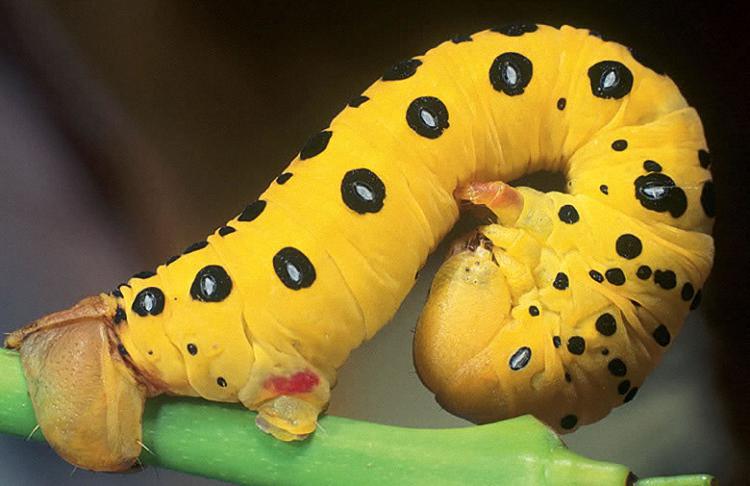There are a variety of South African moth caterpillars, with one such species being the Gonimbrasia belina. Found all over South Africa, the large caterpillar of the moth is edible. The worm or caterpillar is known as the mopane worm and considered a very potent source ofprotein. Millions of indigenous South Africans consume this caterpillar as part of their regular diet.
Life Cycle of The South African Moth Caterpillar
The lifecycle of the mopane worm is similar to that of other caterpillars. It hatches in the summer and starts consuming all the foliage around the area where it has hatched. As the larva starts to grow the moth moults exactly 4 times during its 5 larval stages. After that, the South African moth caterpillar is harvested because this is its most desirable state. If the larva is not harvested after the fourth moult it starts to burrow underground to pupate.
The pupa stage is when the caterpillar starts to turn into an adult moth. The entire transformational procedure takes approximately 27 months during the winter. The adult moth emerges in early summer during November and December. Unfortunately (for the moth) the life of an adult moth is only three or four days and during that time they mate and quickly lay their eggs.
Enemies of the South African Moth Caterpillars
Since the moth is very low in the food chain, different predators often consume it. It is prone to disease as well. In fact, over 40% of its eggs are attacked by a variety of parasites.
The caterpillars themselves are very vulnerable to catching a viral infection and therefore have a very low survival rate. Predators include humans and birds; both like to consume the caterpillar for its high-protein nutritional value.
Diet of The South African Caterpillar
These caterpillars normally feed on the trees that they grow on. They eat the foliage of that particular tree as their main food source as it is closest in terms of access. If it finds different leaves, like that of the mango tree, close by then it will consume that foliage also, thereby expanding into a larger territory.
Because the larval stage of the mopane caterpillar is very short, as compared to other insects, it is not apt to create a very extensive degree of damage to its home tree.
Therefore, when the next generation of worms matures on the tree the foliage has recovered and the new generation of voracious feeders continues to eat nonstop till they move into underground burrows to begin their metamorphosis.
The South African caterpillar is chosen as a food source by women and children who handpick them to retain freshness and consume them immediately. They are not considered the property of the plant-owner but permission to harvest them must be asked of the landlord. There are many women who tie strips of bark to certain trees and establish their ownership or even relocate the baby caterpillars to areas closer to their home in order to harvest them when the time is right.





